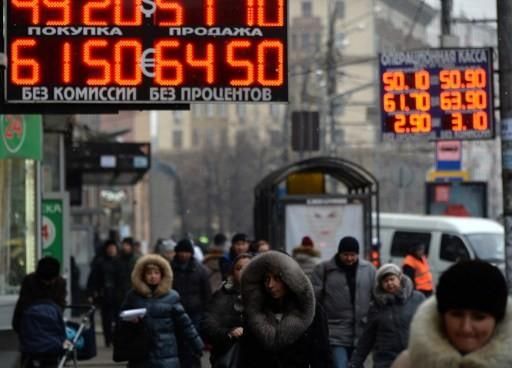ЎЎЎЎОД/РВАЛІЖҫӯТвјыБмРд(ОўРЕ№«ЦЪәЕkopleader)»ъ№№ЧЁАё ІйЛюД·ЦЗҝв ЧчХЯ АнІйөВ-ҝөДЙАы(Richard ConnollyЈ¬Уў№ъ»КјТ№ъјККВОсСРҫҝЛщ¶нВЮЛ№УлЕ·СЗПоДҝёұСРҫҝФұ)
ЎЎЎЎІ»ЙЩИЛИПОӘЈ¬ЕУҙуөДНвХ®УлІ»¶ПО®ЛхөД№ъјКҙўұёФӨКҫЧЕ¶нВЮЛ№ұШҪ«·ўЙъТ»іЎҪрИЪОЈ»ъЎЈө«ЙоИл·ЦОцЦ®әу·ўПЦЈ¬¶нВЮЛ№өДНвХ®ОКМвұ»СПЦШҝдҙуЈ¬іцПЦАаЛЖ1998ДкҪрИЪОЈ»ъөДҝЙДЬРФјёәхІ»ҙжФЪЎЈПаұИЦ®ПВЈ¬¶нВЮЛ№Нв№ъЦұҪУН¶ЧКөДІ»¶ППВ»¬ёьОӘБоИЛөЈУЗЎЈ
 ¶нВЮЛ№ОӘәОІ»»б·ўЙъҪрИЪОЈ»ъЈҝ
¶нВЮЛ№ОӘәОІ»»б·ўЙъҪрИЪОЈ»ъЈҝЎЎЎЎҫЎ№Ь¶нВЮЛ№ҫӯјГРОКЖТАИ»әЬСПҫюЈ¬ө«№ШУЪ¶нВЮЛ№НвХ®өДОКМвТ»Цұұ»ҝдҙуЎЈ
ЎЎЎЎThough the country still faces difficult economicconditions, the problem of external debt has been exaggeratedЎЈ
ЎЎЎЎУЙУЪҙуБҝНвХ®ГжБЩөҪЖЪіҘ»№Ј¬ИЛГЗІВІв¶нВЮЛ№ҝЙДЬ»бФЪІ»Ф¶өДҪ«АҙҫӯАъТ»іЎҪрИЪОЈ»ъЎЈИ»¶ш¶ФУЪ¶нВЮЛ№өДХюІЯЦЖ¶ЁХЯ¶шСФЈ¬ХвР©ҪрИЪОКМвІўГ»УРұнГжЙПҝҙЖрАҙДЗГҙБоИЛөЈУЗЎЈ¶нВЮЛ№өДНвХ®әЬҙуТ»Іҝ·ЦІў·ЗУЙОч·ҪТшРРіЦУРЈ¬¶шКЗЧўІбФЪ№ъНвөДЖдЛы¶нВЮЛ№Дё№«Лҫ»тҝШ№Й№«ЛҫЎЈХвЦЦЎ°јҜНЕДЪІҝЎұХ®ОсәЬИЭТЧЦШРВРӯ¶ЁЈ¬ТвО¶ЧЕ¶нВЮЛ№І»ҝЙДЬ·ўЙъ»хұТОЈ»ъЎЈПа·ҙЈ¬ЖдЛыТ»Р©ЦёұкЈ¬ұИИзНв№ъЦұҪУН¶ЧК(FDI)Ј¬¶ФҫӯјГҪЎҝө¶ИЛщ·ўіцөДРЕәЕ·ҙ¶шёьУҰЧўТвЎЈ
ЎЎЎЎA large volume of scheduled external debt repaymentshas led to speculation that Russia could experience a financial crisis in thenear future. However, these financial vulnerabilities are not as worrying toRussian policy-makers as they might appear. A significant share of RussiaЎҜsexternal debt is owed not to Western banks, but instead to other Russian parentor holding companies registered abroad. This Ў®intra-groupЎҜ debt is easilyrescheduled, which means that Russia is unlikely to suffer a currency crisis ЁCthough other indicators, such as foreign direct investment, are more worryingfor the health of the economyЎЈ
ЎЎЎЎНвҙўПВҪөөДұіәу
ЎЎЎЎThe dynamics behind falling reserves
ЎЎЎЎИҘД궬јҫВ¬Іј·иҝсұбЦөЈ¬°йЛж¶нВЮЛ№НвҙўПВҪөЈ¬Йъ¶ҜөШХ№ПЦБЛ¶нВЮЛ№ҫӯјГөДЖЈИнТФј°УНјЫПВөш¶ФЖдіе»чЦ®ҙуЎЈ
ЎЎЎЎThe dramatic depreciation of the roubleover the winter, along with a decline in RussiaЎҜs international reserves,vividly illustrated RussiaЎҜs economic weaknesses and vulnerability to decliningoil pricesЎЈ
ЎЎЎЎИ»¶шЈ¬ИҘДкЛДјҫ¶ИВ¬ІјұААЈУРТ»ёцЦчТӘФӯТтУлУНјЫПВөшІўОЮЦұҪУ№ШБӘЎЈДЗҫНКЗНвХ®іҘ»№¶оөДјӨФцёшВ¬ІјҙшАҙПВРРС№БҰЎЈУЙУЪОч·Ҫ№ъјТ¶Ф¶нВЮЛ№КөК©ҪрИЪЦЖІГЈ¬ҙуБҝ¶нВЮЛ№ЖуТөҪшИлОч·ҪЧКұҫКРіЎөДНЁөА»щұҫұ»¶ВЛАЈ¬¶шІ»ҪцҪцКЗЦЖІГГыөҘЙПөДДЗР©ЖуТөЎЈ
ЎЎЎЎHowever, one of the principal causes of theroubleЎҜs poor performance in the final quarter of 2014 was not directly relatedto the falling price of oil. Instead, a spike in external debt repayments alsocreated downward pressure on the rouble. Because of financial sanctions imposedby Western states, access to Western capital markets was effectively closed toa large number of Russian corporations, and not just those directly targeted bysanctionsЎЈ
ЎЎЎЎУЙУЪОЮ·ЁОӘПЦУРХ®Ос»сөГФЩИЪЧКЈ¬¶нВЮЛ№ЖуТөұ»ЖИ°ҙЖЪіҘ»№Х®ОсЎЈЖдҪб№ыКЗЈ¬¶нВЮЛ№өДЧЬНвХ®ҙУ2014Дк1ФВ·ЭҙуФј7280ТЪГАФӘҪөЦБ2014ДкөЧөД5970ТЪГАФӘЎЈНвХ®ҙжБҝИсјхі¬№э1300ТЪГАФӘЈ¬°ьАЁіҘХ®(ЦчТӘКЗПтОч·ҪТшРР)ТФј°ТФВ¬ІјјЖјЫХ®ОсөДГАФӘјЫЦөөДЛхјхЎЈ
ЎЎЎЎUnable to refinance existing debt, Russianfirms were forced to repay their debts on schedule. As a result, RussiaЎҜs totalexternal debt fell from around $728 billion in January 2014 to $597 billion atthe end of 2014. This sharp reduction of over $130 billion in the stock ofexternal debt was due to a combination of repayments (primarily to Westernbanks) and a reduction in the dollar value of rouble-denominated debtЎЈ
ЎЎЎЎ2014ДкөЧЛҪИЛЧКұҫјУЛЩБчіцФшТэЖрТ»Хуәд¶ҜЈ¬ҫЭ№АЛг2014ДкЧЬБчіцҙпөҪ1540ТЪГАФӘЈ¬ЙПКцұ»ЖИіҘ»№НвХ®ЦБЙЩКЗНЖ¶ҜТтЛШЦ®Т»ЎЈХв·ҙ№эАҙөјЦВ¶нВЮЛ№Нв»гҙўұёПВҪөЈ¬ТтОӘЖуТөРиТӘҪ«В¬Іј¶Т»»іЙНв»гАҙіҘ»№НвХ®ЎЈ2014ДкЈ¬¶нВЮЛ№№ъјКҙўұёҙУДкіхөД5100ТЪГАФӘҪөЦБДкД©өД3880ТЪГАФӘЎЈДҝЗ°¶нВЮЛ№НвҙўОӘ3560ТЪГАФӘЎЈ
ЎЎЎЎThesurge in net private capital outflows that attracted much excitement at the endof 2014 ЁC estimated to have reached $154 billion in 2014 -- was at leastpartially driven by these forced external debt repayments. This in turncontributed to the reduction in RussiaЎҜs foreign exchange reserves as roubleswere exchanged for foreign currency to service external debt obligations. Overthe course of 2014, RussiaЎҜs international reserves dwindled from $510 billionat the beginning of the year to $388 billion at the end of the year. Today,they stand at $356 billionЎЈ
ЎЎЎЎҪрИЪөҜРФ
ЎЎЎЎFinancial flexibility
ЎЎЎЎІҝ·ЦС§ХЯЈ¬ұИИзҙуОчСуАнКВ»б(Atlantic Council)өД°ІөВЛ№-°¬Л№ВШөВ(Anders Aslund)Ј¬ИПОӘНвҙўПВҪөУлёЯ¶оНвХ®ҪбәПЖрАҙҪ«НюРІ¶нВЮЛ№өДҪрИЪОИ¶ЁЎЈЛыИПОӘХвАпУРБҪҙуФӯТтЈ¬Т»КЗ¶нВЮЛ№өД№ъјКҙўұёБч¶ҜРФІ»ЧгЈ¬ДСТФУГАҙіҘ»№НвХ®Ј¬¶юКЗ¶нВЮЛ№ҪьЖЪРиіҘ»№өДНвХ®№жДЈі¬№эБЛБўјҙҝЙУГөДҙўұёЛ®ЖҪЎЈЖдКөХвБҪөг¶јУРР©ҝдҙуЖдҙКЎЈ
ЎЎЎЎSome, such as the Atlantic CouncilЎҜs AndersAslund, have suggested that this cocktail of declining reserves and high externaldebt threatens the financial stability of Russia. This is, he suggests, because(a) RussiaЎҜs international reserves might not be liquid enough to be used tomeet external financial obligations; and (b) RussiaЎҜs foreign debt obligationsin the near future exceed the readily available stock of reserves. However,both claims are exaggeratedЎЈ
ЎЎЎЎКЧПИЈ¬¶нВЮЛ№өД№ъјКҙўұёКЗҫЯУРБч¶ҜРФөДЎЈХвТ»өгұҫ-°ўАпЛ№(Ben Aris)ЧоҪьФЪЎ¶BNEЎ··ўұнөДОДХВҪІөГәЬЗеіюЎЈ
ЎЎЎЎFirst, RussiaЎҜs international reserves areliquid, as clearly documented by Ben Aris in a recent BNE articleЎЈ
ЎЎЎЎөЪ¶юөгҙујТҪІөДұИҪПЙЩЈ¬ДЗҫНКЗ¶нВЮЛ№ОҙАҙБҪДкөҪЖЪөДНвХ®ІўІ»ПсҝҙЙПИҘДЗГҙ№жДЈЕУҙуЎЈёщҫЭ¶нВЮЛ№СлРР[ОўІ©]НшХҫ№«ІјөДКэҫЭЈ¬2015ДкјЖ»®іҘ»№өДНвХ®№жДЈОӘВФөНУЪ750ТЪГАФӘ(ЖдЦР2015Дк1-5ФВОӘ450ТЪГАФӘ)Ўў2016Дк680ТЪГАФӘЎЈХвТвО¶ЧЕФЪ2016ДкөЧЦ®З°Ј¬јЖ»®іҘ»№өДНвХ®№жДЈОӘВФёЯУЪ1400ТЪГАФӘЎЈҪ«ЖдУлҙуФј3500ТЪГАФӘөД№ъјКҙўұёПа¶ФХХЈ¬ЧФИ»ҝҙЖрАҙ№жДЈ№эҙуәНБоИЛөЈУЗБЛЎЈ
ЎЎЎЎSecond, and less widely documented, is thefact that RussiaЎҜs foreign debt obligations over the next two years are not asimposing as might first appear. According to data publically available on theBank of Russia website, a little under $75 billion of external debt repaymentsare scheduled to be repaid over 2015 (a further $45 billion was scheduled forrepayment between January and May 2015)Ј¬ and $68 billion over 2016. That meansthat between now and the end of 2016, over $140 billion is currently scheduledto be repaid. Set against around $350 billion in international reserves, thislooks like a substantial and worrying amountЎЈ
ЎЎЎЎИ»¶шКВКөЙПЈ¬¶нВЮЛ№јЖ»®іҘ»№өДНвХ®ЦРәЬҙуТ»Іҝ·ЦКЗ¶Ф¶нВЮЛ№Х®ОсИЛЛщҝШ№Й»т№ШБӘөДТшРР»тЖдЛыЖуТөКөМеөДТеОсЎЈ»»ҫд»°ЛөЈ¬ЖдЦРУРәЬҙуТ»Іҝ·ЦКЗјҜНЕДЪІҝХ®ОсЈ¬јҙ¶нВЮЛ№ЖуТөҙУУлЖдГЬЗР№ШБӘөДФЪҫіНвЧўІбөДКөМеКөК©өДҪиҝоЈ¬ҝЙДЬіцУЪЎ°Л°КХР§ВКЎұөИДҝөДЎЈҙЛАаХ®ОсәЬИЭТЧХ№ЖЪЈ¬ТтҙЛІўІ»№№іЙЎ°УІРФЎұіҘХ®ТеОсЎЈ
ЎЎЎЎHowever, much of RussiaЎҜs scheduledexternal debt repayments consist of obligations to banks or other corporateentities that either own or are linked with the Russian debtors. In otherwords, there is significant Ў®intra-groupЎҜ debt, where Russian firms borrow fromclosely-linked entities registered offshore for the purpose of Ў®taxefficiencyЎҜ, for example. Such debt can be easily rescheduled and does notconstitute a Ў®hardЎҜ debt obligationЎЈ
ЎЎЎЎДЗГҙјҜНЕДЪІҝХ®ОсөҪөЧХј¶нВЮЛ№НвХ®ұИЦШөД¶аЙЩДШЈҝЧЬМе¶шСФҙуФјХјЧЬНвХ®өДЛД·ЦЦ®Т»ЎЈө«ёьЦШТӘөДКЗЈ¬ЛьХј2015ДкәН2016ДкјЖ»®іҘ»№Х®Ос¶оөДТ»°лЧуУТЎЈХвТвО¶ЧЕОҙАҙ18ёцФВ¶нВЮЛ№ЖуТөЎ°УІРФөДЎұНвХ®іҘё¶¶оёьҪУҪь700ТЪГАФӘ¶ш·З1400ТЪГАФӘЎЈҝјВЗөҪ¶нВЮЛ№ТАИ»ҪПёЯөД№ъјКҙўұёЈ¬ТФј°Рн¶аЖуТөТАИ»іЦРшІъЙъҙуБҝНв»гКХИлЈ¬ХвТ»Кэ¶оІўІ»ДЬИГ¶нВЮЛ№ХюІЯЦЖ¶ЁХЯөЈУЗЎЈ
ЎЎЎЎJust how much of RussiaЎҜs external debtdoes intra-group debt account for? Overall, it accounts for around a quarter oftotal external debt. But even more importantly, it accounts for around half ofthe repayments that are scheduled for 2015 and 2016. This means that the totalЎ®hardЎҜ external debt repayments over the next 18 months amounts to a figurenearer $70 billion than $140 billion. Given RussiaЎҜs still substantialinternational reserves, and the fact that many firms continue to generate largevolumes of foreign currency revenues, this amount will not worry policy-makersin RussiaЎЈ
ЎЎЎЎХ№НыОҙАҙЈ¬УЙУЪ¶нВЮЛ№ҙуБҝНвХ®ҝЙДЬұ»Х№ЖЪЈ¬ОТГЗФӨјЖЧЬНвХ®ҙжБҝПВҪөЛЩ¶ИУҰёГ·ЗіЈ»әВэЈ¬¶шјҜНЕДЪІҝХ®ОсөДұИЦШЙПЙэЎЈХвУҰёГТвО¶ЧЕЧЬөД¶МЖЪХ®ОсКэҫЭҪ«»бЙПЙэЈ¬ҝЙДЬҝҙЖрАҙұИҪППЕИЛЈ¬ө«ХэИзұҫОДЛщЦёіцөДЈ¬¶ФКэҫЭЙоИл·ЦОцЦ®әу·ўПЦКөјКҪб№ыІўГ»УРДЗГҙҝЙЕВЎЈ
ЎЎЎЎLooking to the future, because much ofRussiaЎҜs external debt will likely be rescheduled, we should expect to see thetotal stock of external debt decline quite slowly, and the share of intra-groupdebt to rise. This should mean that the headline short-term debt figure willgrow and perhaps appear disconcertingly high. But, as this note shows, acareful reading of the data should lead to a less alarming conclusionЎЈ
ЎЎЎЎН¶ЧКПВҪөөДНюРІ
ЎЎЎЎThreat of declining investment
ЎЎЎЎХвКЗ·сТвО¶ЧЕ¶нВЮЛ№ҫӯјГ·ЗіЈҪЎИ«ДШЈҝДЗө№І»јыөГЈ¬ө«ОТГЗҝЙТФЛө¶нВЮЛ№·ўЙъҪрИЪОЈ»ъөДҝЙДЬРФәЬөНЎЈөұИ»Ј¬Из№ыФЩҙОіцПЦУНјЫН»И»әНіЦРшПВөшЈ¬ТАИ»»бФміЙәЬ¶аОКМвЎЈө«КЗФЪУНјЫПа¶ФОИ¶ЁөДјЩЙиЗйҫіПВЈ¬ЕУҙуөДНвХ®ёәөЈөјЦВ¶нВЮЛ№·ўЙъАаЛЖ1998Дк8ФВҪрИЪОЈ»ъөДҝЙДЬРФјёәхГ»УРЎЈ
ЎЎЎЎDoes this mean that the Russian economy issafe? Well, it does mean that the likelihood of a financial crisis is quitelow. Of course, another sudden and sustained decline in the price of oil wouldcause problems. But in a relatively benign baseline scenario of stable oilprices, it is unlikely that onerous external debt repayments will cause adramatic financial crisis like the one Russia suffered in August 1998.
ЎЎЎЎІ»РТөДКЗЈ¬¶нВЮЛ№ЖдЛыҫӯјГЦёұкҝҙЖрАҙёьОӘБоИЛөЈУЗЎЈұИИзЛөЈ¬Нв№ъЦұҪУН¶ЧКБчИлТСҫӯҪөЦБј«¶ЛөНО»ЎЈ2014ДкПВ°лДкЈ¬¶нВЮЛ№Нв№ъЦұҪУН¶ЧКБчИлОӘёәЦөЎЈҫЎ№ЬХвІў·ЗГ»УРПИАэЈ¬ХвТ»КВКөУлН¶ЧКјУЛЩО®Лх·ЕФЪТ»ЖрИҘҝҙЈ¬ЛөГч¶нВЮЛ№өДН¶ЧКЗ°ҫ°·ЗіЈчцөӯЎЈ
ЎЎЎЎUnfortunately for Russia, other economicindicators look more worrying. For example, inflows of foreign directinvestment (IFDI) in Russia have fallen to worrying levels. In the second halfof 2014, IFDI was negative. While this is not unprecedented, the fact that itaccompanied a wider contraction in investment indicates that the prospects forinvestment in Russia appear bleakЎЈ
ЎЎЎЎХвТ»өгј«ЖдЦШТӘЈ¬ТтОӘНв№ъЦұҪУН¶ЧКБчИлКЗҝЖјјәНјјДЬөД№ШјьАҙФҙЎЈИз№ыХвТ»ЗчКЖіЦРшПВИҘЈ¬¶нВЮЛ№ЧЬН¶ЧКөДР§ВКҪ«»бПВҪөЈ¬АН¶ҜЙъІъВКФціӨҪ«»б·ЕВэЈ¬¶нВЮЛ№өД№ъјКҫәХщБҰҪ«»бҪшТ»ІҪПВҪөЈ¬ҙУ¶шЧоЦХФміЙИЛГЗЙъ»оЛ®ЖҪПВҪөЎЈ
ЎЎЎЎThis is of tremendous importance becauseIFDI is a crucial source of technology and knowhow. If this trend persists, theeffectiveness of RussiaЎҜs aggregate investment will decline, productivitygrowth will slow, RussiaЎҜs international competitiveness will slump further,and ultimately living standards will fallЎЈ
ЎЎЎЎөг»чҙЛҙҰЈ¬ФД¶БФӯОД
ЎЎЎЎ(ұҫОДЧчХЯҪйЙЬЈәІйЛюД·ЦЗҝвЈ¬КЗТ»јТ¶АБўөДХюІЯСРҫҝЛщЈ¬ЧЬІҝО»УЪВЧ¶ШЎЈЖдИООсКЗ°пЦъҪЁБўТ»ёцҝЙіЦРшөД°ІИ«Ўў·ұИЩәН№«ХэөДКАҪзЎЈ)
ЎЎЎЎұҫОДОӘЧчХЯ¶АјТКЪИЁРВАЛІЖҫӯК№УГЈ¬ЗлОрЧӘФШЎЈЛщ·ўұнСФВЫІ»ҙъұнұҫХҫ№ЫөгЎЈ
ЎЎЎЎЎ¶И«ЗтРВОЕСЫЎ·КЗТ»өөУЙРВАЛІЖҫӯИ«ЗтјЗХЯәНЧ«ёеИЛНЕ¶УОӘДъіКПЦөДФӯҙҙЧЁАёјҜЎЈХжПаФ¶ұИјЫЦө№ЫёьЦШТӘЎЈҫҙЗл№ШЧўИ«ЗтРВОЕСЫОўРЕ№«ЦЪәЕЈәИ«ЗтРВОЕСЫЎЈЙЁВлёь·ҪұгЎЈ

ОДХВ№ШјьҙКЈә ¶нВЮЛ№ҫӯјГОЈ»ъНв»гҙўұё№ъјКҙўұёНвХ®Нв№ъЦұҪУН¶ЧКFDI